Commercial Food Equipment Certifications - what they mean & why they're important
NSF? ETL? UL? What's the difference? What does it mean? Whether you just want to pass a health and safety inspection or you're concerned with energy conservation, knowing what equipment certification symbols mean can be a helpful, if not crucial piece of information. Safety and health inspections can be stressful if you don't know with complete certainty that the equipment you use is up to standards. With a certification sticker, the inspector is happy, you're happy, and the employees who use the item get a warm fuzzy feeling inside, knowing they're using a meat slicer that won't deprive them of an appendage they'd like to keep around.
This is a brief overview of some certifications you will see listed either in name or in symbol--why they came to be, what their standards are, and on what sort of equipment you can find them.
ADA Compliant: Standards for Accessible Design

The Americans with Disabilities Act (ADA) was passed in 1990 to prevent discrimination against people with disabilities in the workplace. ADA equipment is specially designed to allow persons with disabilities the same labor opportunities as those without. Dimensions and requirements for this certification are established and upheld by the ADA, and adjusted equipment may include an ADA badge or sticker.
AHRI: Air Conditioning, Heating, and Refrigeration Institute

This certification agency tests commercial refrigeration and kitchen ventilation equipment; they focus mainly on manufacturer integrity and less on safety and health inspection standards. Look for the AHRI symbol to verify that a device works and lasts according to what the manufacturer claims.
ANSI: American National Standards Institute

This organization administers and coordinates the U.S. voluntary standards and conformity assessment system. Although this certification is helpful in passing health and safety inspections, the ANSI does not actually develop the standards, nor do they perform tests. However, many testing laboratories and safety certification organizations are accredited and inspected by ANSI which bolsters a Standards Developing Organization's (or, SDO's) credibility.
ANSI is commonly seen associated with NSF (see below), displayed as ANSI/NSF or NSF/ANSI. In the commercial restaurant equipment industry, NSF numbered standards are listed as NSF/ANSI _. ANSI requires special permission for symbol use, so usually it will only be seen in text when displayed as a certification or co-certification on manufacturer listings.CE: "Conformité Européene"

Items marked with the CE logo are approved for sale in all countries within the European Union. Without the CE sticker, equipment cannot enter the European marketplace. Intertek has now undertaken regulation of the CE mark and is responsible for testing CE listed products. CE incorporates rules for both health and safety.
CGA: Canadian Gas Association

The CGA develops safety standards for gas-powered equipment; products bearing the CGA blue flame logo have been verified to comply with Canadian gas appliance standards. CGA is a specific mark given by the CSA (Canadian Standards Association).
CSA: Canadian Standards Association
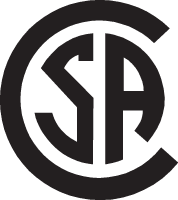
Primarily applicable in the Canadian market, CSA tests electrical and gas equipment (see CGA) and may serve as a substitute for NSF and UL certifications.
Energy Star

Energy Star is a U.S. Environmental Protection Agency (EPA) voluntary program that assists businesses in saving money, increasing efficiency, and protecting the environment. Companies can even qualify for tax credits if certified by Energy Star. This EPA was established in 1992 as a result of the Clean Air Act, Section 103(g) which aims to conduct engineering research to develop and evaluate non-regulatory strategies for reducing air pollution, especially via greenhouse gas reduction and efficiency increase.
ETL: Edison Testing Laboratories (by Intertek)
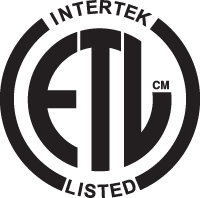
ETL by Intertek is a Nationally Recognized Testing Laboratory (NRTL) approved by the Occupational Safety and Health Administration (OSHA) to serve as proof of compliance with North American standards. This agency is one of the largest testing, inspection, and certification companies; ETL subdivides its certifications by general safety, sanitation, and performance integrity.
"ETL Listed" means the product has been tested for compliance to safety standards. "ETL Sanitation" is the mark a product receives if tested and approved for sanitation compliance to standards such as NSF/ANSI. "ETL Verified" products have been tested for performance integrity, assuring the consumer that the item indeed performs the way the manufacturer has advertized and will continue to do so. Sanitation standards ETL uses for the restaurant industry are as follows: ANSI/NSF 2, ANSI/NSF 3, ANSI/NSF 4, ANSI/NSF 5, ANSI/NSF 6, ANSI/NSF 7, ANSI/NSF 8, ANSI/NSF 12, ANSI/NSF 18, ANSI/NSF 25, ANSI/NSF 51, and ANSI/NSF 59.FCC: Federal Communications Commission
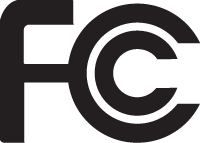
The FCC regulates international and interstate radio, television, wire, satellite, and cable communications in the United States, the District of Columbia, and U.S. territories. This regulation is necessary because only certain commercial devices are permitted to operate over radio frequencies, common in microwaves and induction cooking ranges.
Green Seal
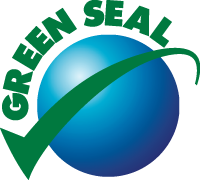
Products with the Green Seal have been approved for safe use throughout the life of the product and are put through a rigorous testing to meet Green Seal's science-based environmental standards. Their goal is to create a "Green Economy" that uses renewable energy with minimal environmental impact. Their seal indicates that a product complies with Green Seal's goals and scientific standards.
NSF International: The Public Health and Safety Organization
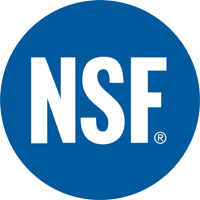
NSF International, originally established in 1944 as the National Sanitation Foundation, is a certification agency that focuses mainly on sanitation standards for food prep equipment to avoid food-borne illness. Although many of their standards are based on government regulations, NSF is an independent, accredited, and the most specified and accepted certification marking agency. ANSI can often be seen co listed with NSF as NSF is accredited by ANSI.
"NSF International" regular mark indicates internationally recognized certification. "NSF C" has been approved for compliance with Canadian standards only. "NSF US" has been approved for compliance with the United States' standards only. "NSF C US" is certified for North American standards in both Canada and the U.S.NTEP: National Type Evaluation Program
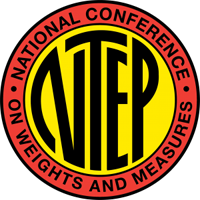
This organization is a compilation of several different regulatory agencies such as the National Conference on Weights and Measures (NCWM), the National Institute for Standards and Technology (NIST), and state weights and measures officials. NTEP certified products like legal for trade scales and portion control scales must comply with Handbook 44, a set of requirements for any commercial weighing and measuring equipment.
PDI: Plumbing and Drainage Institute
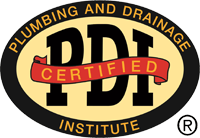
PDI is an organization that certifies floor drains, roof drains, grease interceptors, backwater valves, and other plumbing or drain equipment. This organization both sets standards and develops testing, rating, and installation procedures.
UL: Underwriters Laboratories
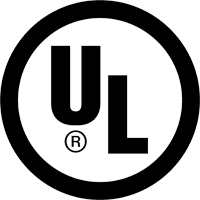
This certification agency focuses mainly on equipment safety standards--specifically electrical safety, sound design, and structural integrity--and is one of the most commonly sought after and recognized labels. Several versions of the UL mark include the following:
"UL listed" means country compliance has not been specified. "UL listed C" indicates that the product is compliant to Canada's standards. "UL listed US" is used to indicate that a product is compliant to the United States' standards. "UL listed C US" means the item has been tested according to both Canadian and the United States' standards. "Gas-Fired" certified products have been evaluated for potential hazards. This label may be country specific to Canada, the United States, or both. "Classified" equipment has been tested according to specific properties for a limited range of hazards and suitability for use under limited or special conditions, compliant to regulatory codes. The "Classified" label may be country specific to Canada, the United States, or both. "Marine listed" items have been evaluated specifically for marine use according to marine standards for safety and other various applicable codes. Requirements for marine certification include hazards unique to harsh marine environments including vibration, impact, water leakage and salt spray corrosion.It's not the most captivating topic, but hopefully now you have a better idea of what those little stickers are there for.



